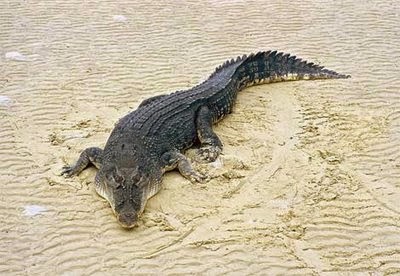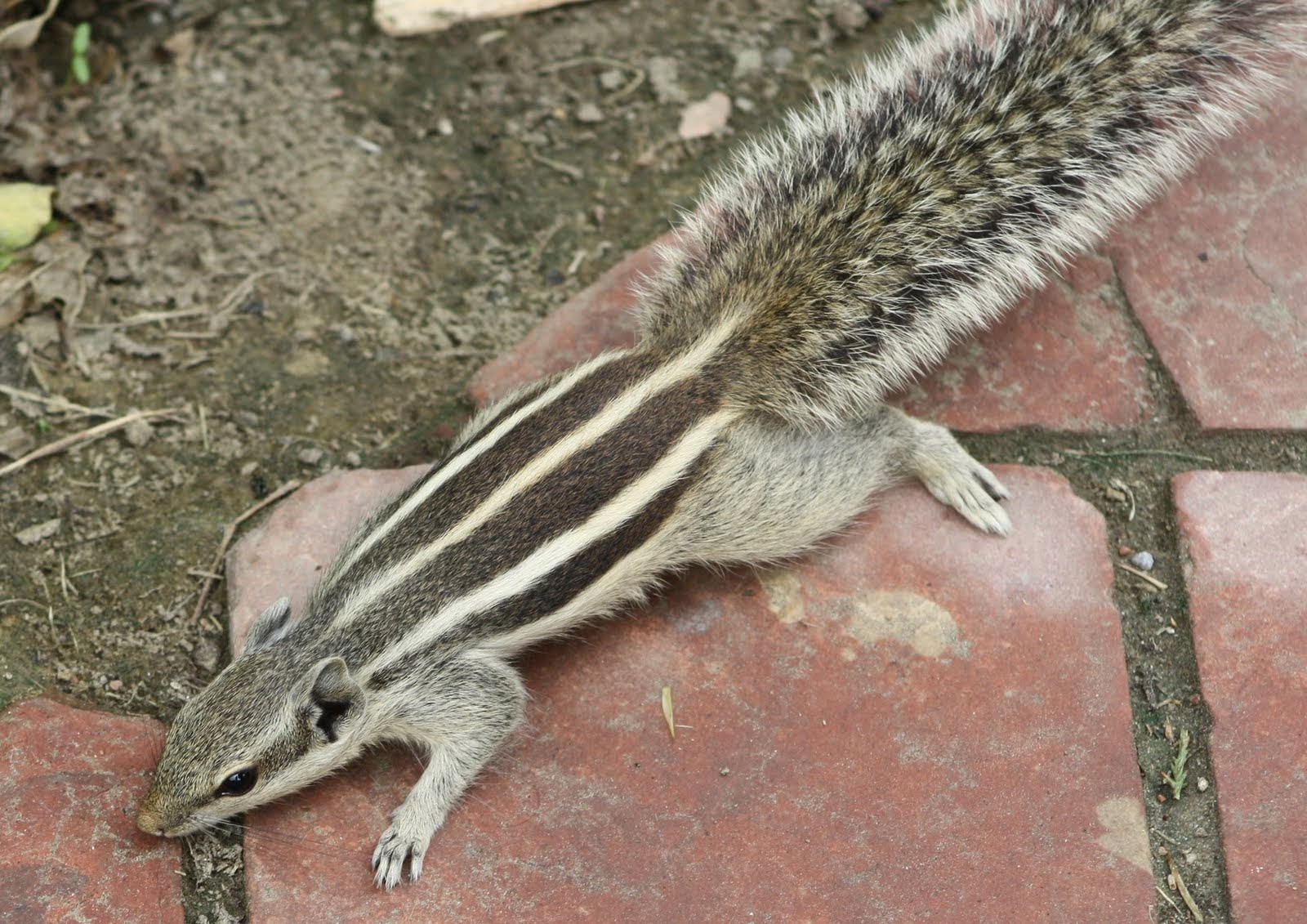Sri Lanka Estuarine Crocodile Or Saltwater Crocodile (Crocodylus Porosus Meniyanna)
Sinhalese: Pita-gatteya, Gatta-kimbula
Tamil: Semmukhan-muthelei
Description: The Estuarine Crocodiles are olive-brown, suffused with yellow and spotted with black. They have been known to grow to about 5.5 meters.
Distribution: Found in the estuaries of the larger rivers and coastal lagoons. Occasionally they swim round by the sea from one river mouth to another, but usually prefer brackish water to salt water.
Breeding: The female builds a mound of dead vegetable matter about 2 to 3 meters in diameter and 1 meter high at the water’s edge, and lays her egg in the centre. At the same time she excavates two trenches on either side, in which she lies and guard the nest. The incubation period is probably about two and one half months.
General Description and Habits of Both Species:
Crocodiles have values in their ears and nostrils, and have a flap of skin at the back of the throat which closes and thus enables them to submerge with their mouths open. The Swamp Crocodiles are sometimes found in quiet jungle water-holes in huge congregations, whereas the Estuarine Crocodile is usually solitary. They spend many hours during the day lying on a bank beside the water, often with their mouths open, and it is believed that this helps to keep them cool. During the night, the Swamp Crocodiles sometimes move from one waterhole to another, and do a lot of their foraging ashore. Their food consists of crabs, fish, frogs, terrapins, lizards and occasionally mammals. The Estuarine Crocodiles are known man-eaters, but the Swamp Crocodiles rarely take man, and then only in certain areas. Swamp Crocodiles dig deep burrows in banks where they hibernate during long droughts. It is not certain how long crocodiles live, but it is probably 50-60 years.



Comments